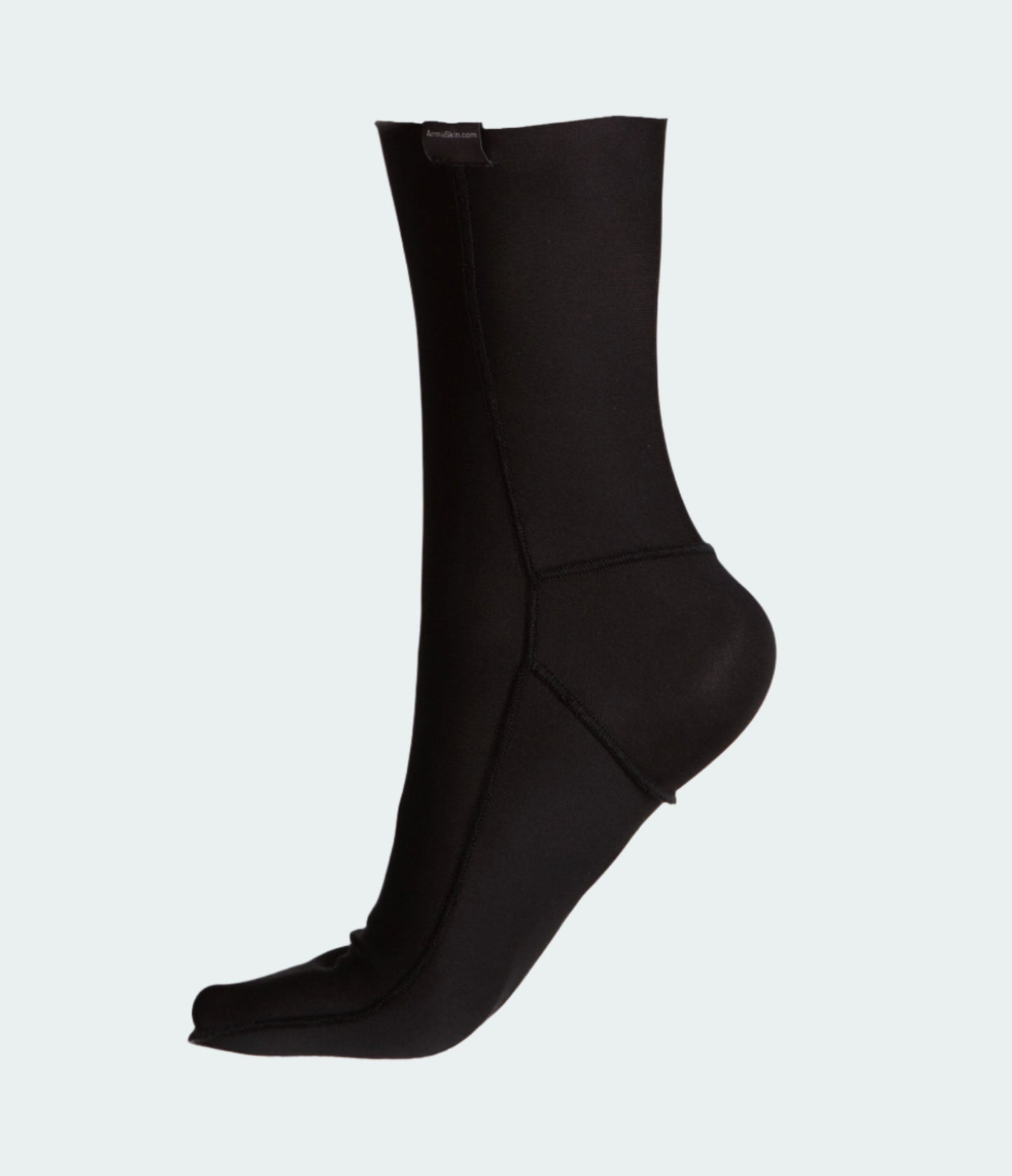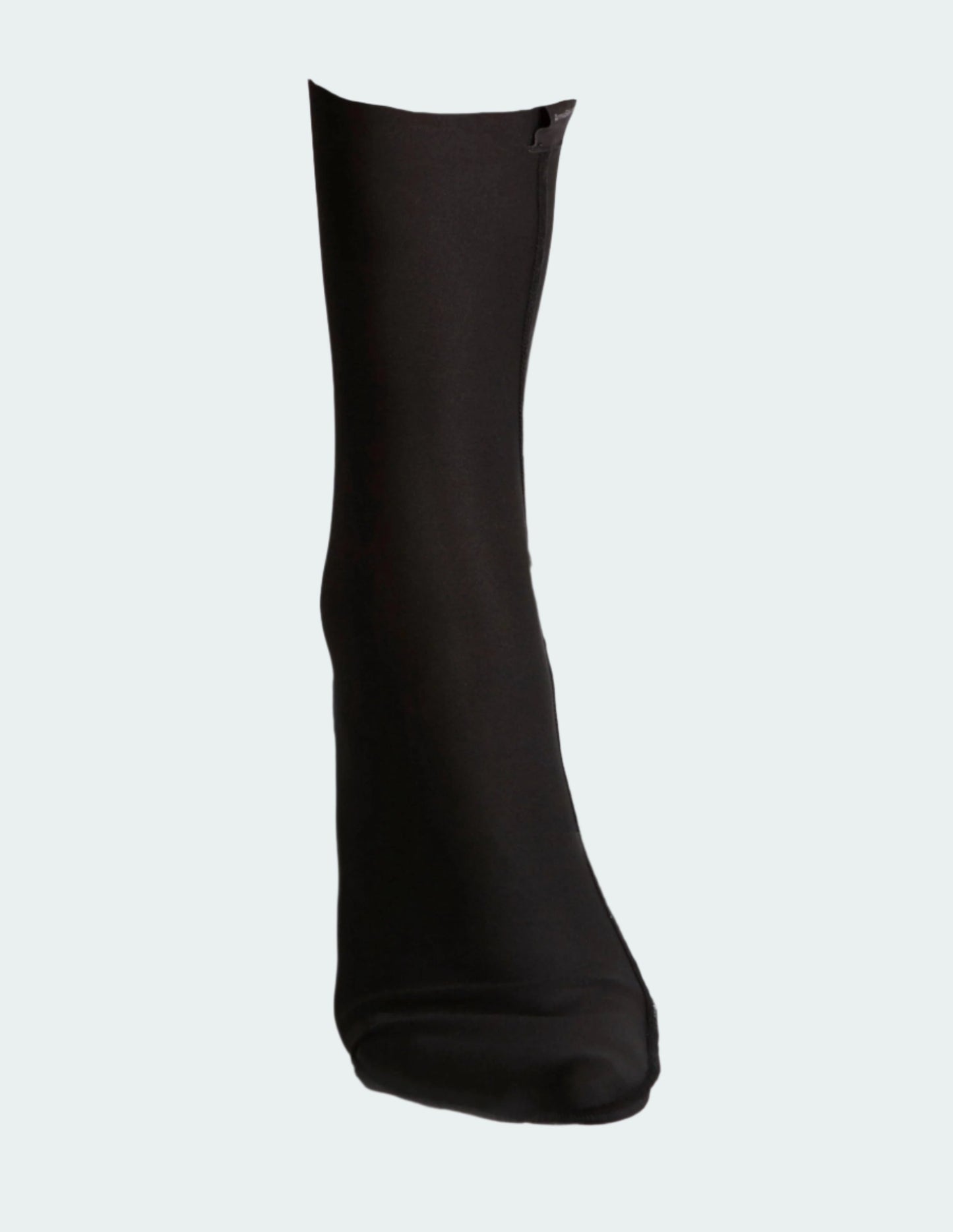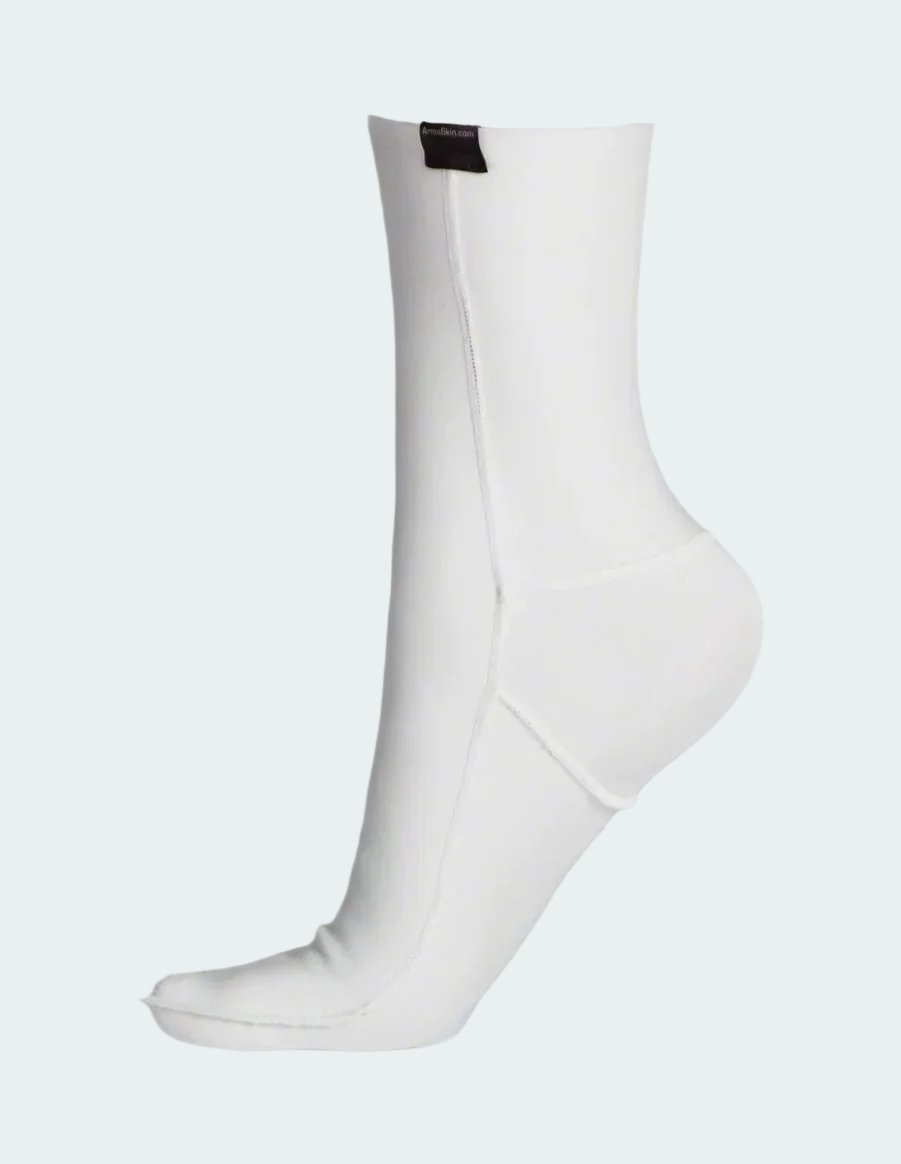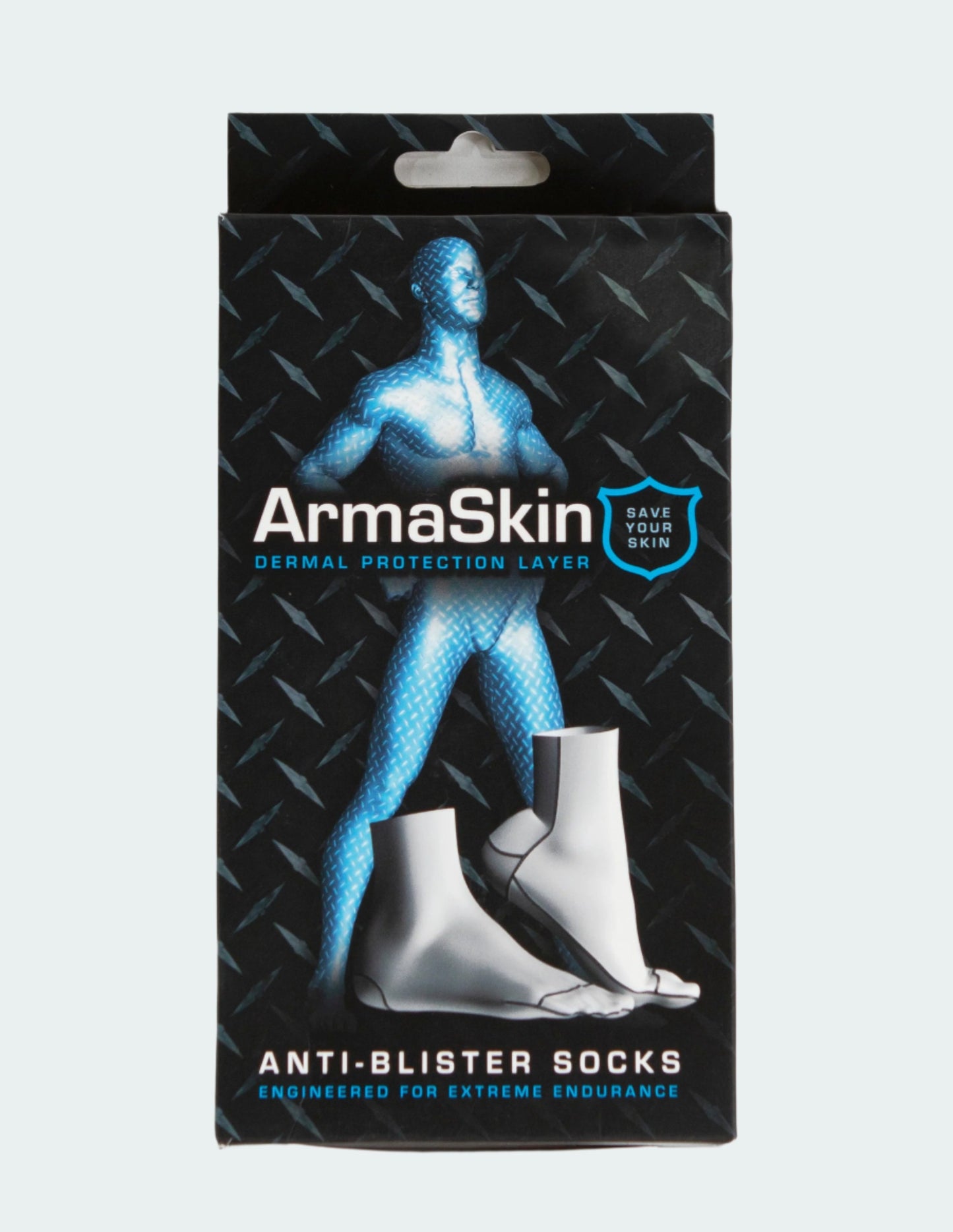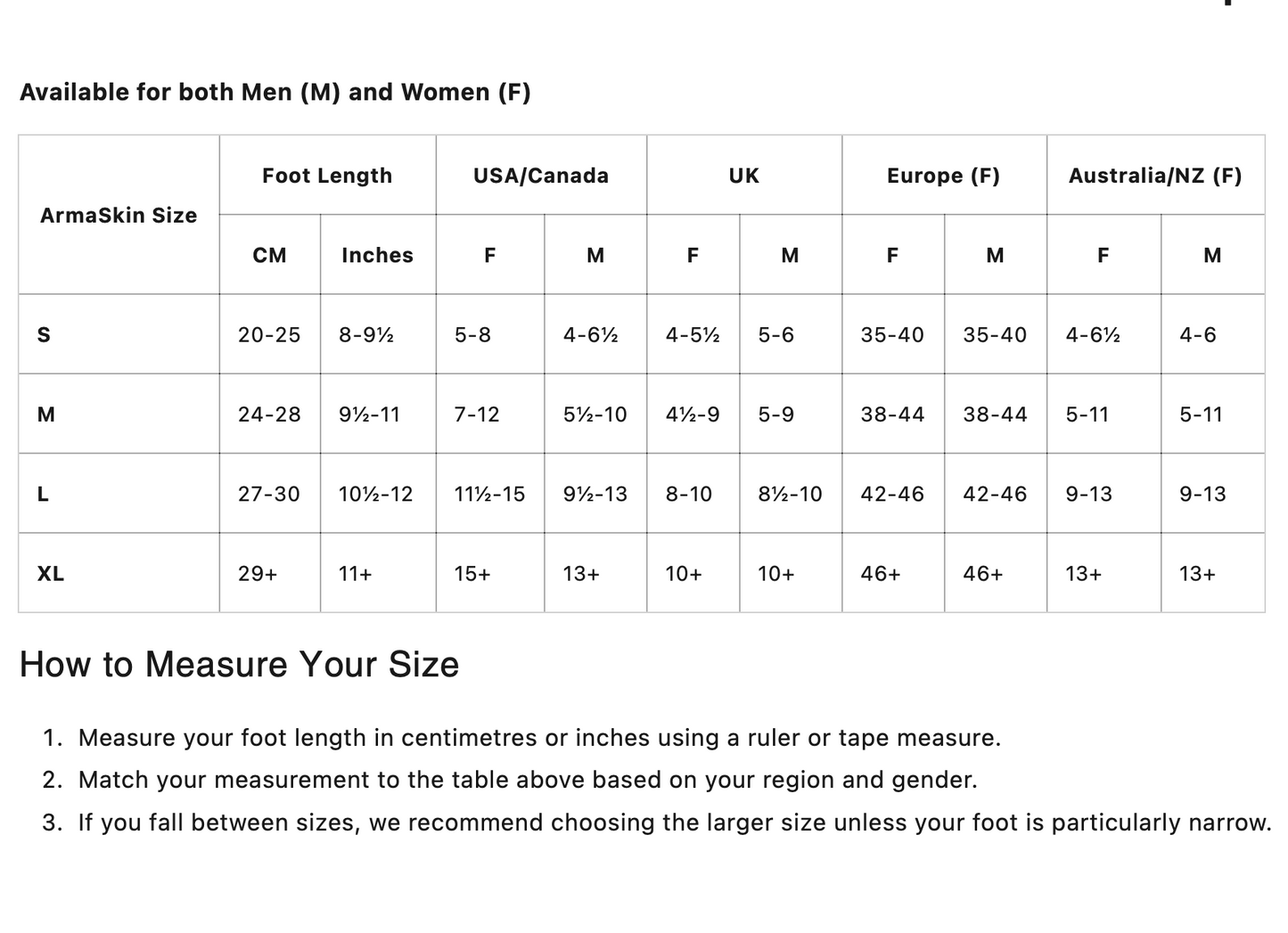For anyone who leads an active lifestyle – whether you’re a hiker, trail runner, ultra-athlete, tactical professional, or even a busy healthcare worker – blisters can quickly turn a promising day into a painful ordeal. As practical as it is to strap on your hiking boots or lace up those running shoes, the blisters that develop along the way are a constant reminder that even the best-laid plans can be hindered by minor injuries. One of the most common debates in blister care is: Should you bandage a blister or let it air out?
In this blog post, we dive deep into both approaches, examine their benefits and drawbacks, and offer insights into why prevention – including the use of innovative products like ArmaSkin socks – might be your best defense against painful blisters. Whether you’re gearing up for an ultra-marathon or preparing for a tactical deployment, understanding blister care can help you stay at peak performance.
The Anatomy of a Blister
Before exploring treatment options, it’s important to understand what a blister actually is. Blisters form when friction or excessive pressure causes the layers of skin to separate, allowing fluid to seep in and cushion the damaged tissue. This natural protection mechanism is designed to promote healing by keeping the underlying skin safe from further injury.
Common Triggers of Blister Formation
Many active individuals are familiar with the common triggers:
• Repeated friction from inconsistent footwear
• Extensive physical activity – think long hikes, running, or military drills
• Improperly fitted gear, including socks that don't stay in place
• Environmental factors like moisture and heat
With the rise in demand for high-performance gear, products like blister prevention socks have become essential. In particular, the revolutionary ArmaSkin socks are designed with blister prevention in mind, incorporating anti-blister liners and ergonomic designs to minimise friction and protect your skin during the most demanding activities.
Bandaging a Blister: The Pros and Cons
Bandaging a blister involves using a protective covering, such as a specialized bandage or blister-specific adhesive dressing, to cushion the blister and keep it clean. Here’s a closer look at the benefits and downsides of this method.
Benefits of Bandaging a Blister
• Protection from Further Irritation: Bandages protect the blister from additional friction by providing a barrier between your skin and your shoes.
• Hygienic Environment: By covering the blister, you reduce the risk of infection, a crucial factor for those on long hikes or engaging in military operations.
• Pain Management: A well-applied bandage, particularly one designed for blisters, can help alleviate the pain by reducing pressure on the blistered area.
The concept is similar to the technology utilised in anti-blister socks. ArmaSkin socks, for example, are engineered to reduce friction and protect high-impact areas, potentially minimising the need for external bandaging during performances.
Drawbacks of Bandaging a Blister
• Moisture Retention: While bandages are designed to keep out dirt and bacteria, they can also trap moisture. Excess moisture can, in turn, slightly prolong the healing process.
Don’t Let Blisters Slow You Down!
Discover the ultimate solution with ArmaSkin Anti-Blister Socks. Designed with advanced friction-reducing technology, these socks keep your feet dry, comfortable, and blister-free – no matter the challenge.
Shop Now• Improper Application Risks: An incorrectly applied bandage may shift during intense physical activity, potentially aggravating the blister rather than promoting healing.
• Cost and Convenience: For those constantly on the move, managing bandages and other blister-specific dressings might not always be practical.
Many athletes and outdoor enthusiasts turn to products like blister prevention socks – including the advanced ArmaSkin socks – as a proactive measure. These socks integrate the benefits of blister protection and eliminate the cumbersome need to apply bandages mid-activity.
Letting a Blister Air Out: A Natural Approach
Allowing a blister to “breathe” means leaving it uncovered so that it can dry naturally. Advocates of this approach believe that air exposure can speed up healing by reducing moisture build-up and freeing the skin to repair itself.
Benefits of Airing Out a Blister
• Natural Drying: Exposing the blister to air can assist in drying the fluid inside, which in some cases might speed up recovery.
• No Additional Equipment Required: Simply letting the blister rest without a covering means you don’t have to buy or manage extra bandages – a practical bonus for ultra-endurance events or military deployments.
• Risk Reduction of Trapping Infection: Provided the blister is kept clean, the open-air method reduces the risk of moisture fostering bacterial growth.
However, it’s important to recognise the risks associated with airing out a blister for extended periods, particularly if you are still active. An exposed blister can easily pick up bacteria from the environment or be irritated by rubbing against your gear.
Drawbacks of Airing Out a Blister
• Risk of Infection: Without a protective barrier, the blister is more exposed to contaminants.
• Pain Due to Friction: In many cases, an unprotected blister is more susceptible to friction, especially during high-intensity activities like trail running or tactical operations.
• Delayed Healing Under Certain Conditions: If the environment is excessively dusty or dirty (for instance, during outdoor adventures), leaving a blister uncovered may ironically hinder the healing process.
Which Approach Is Right for You?
Deciding whether to bandage a blister or let it air out largely depends on the nature of your activity, the location of the blister, and environmental conditions. For example:
• If you’re in the middle of a long run on well-maintained paths, airing out a small blister in a clean setting might be acceptable.
• For those involved in military, tactical, or rugged outdoor scenarios where the risk of infection is higher, carefully bandaging the blister may provide a safer route to recovery.
Often, the ideal solution is a combination of both strategies. The blister might be allowed to air out when you are resting or in a safe, clean environment, and then covered when you resume physical activity. Adaptability is key.
The Preventative Power of ArmaSkin Socks
While the debate continues on whether to bandage a blister or let it air out, the most effective strategy is prevention. Given the substantial physical demands placed on the feet during sporting and tactical activities, preventing blisters from occurring in the first place is paramount.
ArmaSkin socks have been developed with this exact need in mind. Engineered with cutting-edge material science and anatomical design, these socks provide:
• Reduced Friction: With innovative anti-blister liners designed to reduce friction, ArmaSkin socks help minimise the mechanical forces that lead to blister formation.
• Enhanced Moisture-Wicking: By drawing moisture away from the skin, these socks lower the chances of creating that moist environment that not only helps blisters form but also prolongs their healing if they do occur.
• Targeted Padding and Support: Strategic cushioning in high-impact areas means that even during intense activities, your feet are well-supported and less prone to repetitive injury.
For those who lead an active lifestyle, including trail runners, hikers, and tactical professionals, investing in prevention can translate into better performance, fewer health disruptions, and less downtime due to injury.
A Real-World Testimony
Consider Sarah, a dedicated trail runner with an active career in ultra-endurance events. Despite her rigorous training, Sarah often battled blisters during her marathon-style races. “It used to be a constant battle,” Sarah recalls. “I’d have to choose—either risk further damage by letting the blister breathe freely, or cover it up, which sometimes just made the pain worse.”
After switching to ArmaSkin socks, Sarah noticed a dramatic improvement. “The built-in anti-blister liners meant that I hardly experienced any friction. I didn’t have to fuss with bandages halfway through a race, and my recovery was much faster.” Stories like Sarah’s underscore the practical benefits of addressing the root cause of blisters by choosing preventative solutions over reactive treatments.
Science-Backed Insights on Blister Healing
Research into wound healing – particularly as it relates to friction injuries – often highlights the importance of moisture balance in the healing process. A key point of contention is whether a moist environment or a dry one promotes faster recovery.
The Moisture Balance Debate
• Dry Healing: Traditionally, the belief has been that a dry environment promotes faster healing by reducing the risk of infection. This approach supports the idea of letting a blister air out.
• Moist Healing: More modern scholarship suggests that keeping a wound slightly moist can actually encourage faster cellular regeneration. This is where bandaging might offer benefits by retaining an ideal level of moisture while guarding against bacteria.
It’s important to note that when it comes to blisters, the best results might actually come from a tailored approach. For instance, using a breathable, moisture-control bandage during intense activity – and then removing it when safe – could help balance the advantages of both methods.
Customising Your Approach for Different Activities
Ultimately, the decision regarding whether to bandage a blister or let it air out should be customised based on your specific activity and environment:
During High-Intensity Activities
If you’re engaged in intense physical exertion – such as tactical drills, obstacle races, or extended ultra-marathons – securing a blister with a specialised bandage can provide the necessary protection against continual rubbing. Partner this practice with blister prevention socks like ArmaSkin socks, which are designed to reduce friction, and your feet will be much better prepared to handle the strain of prolonged activity.
During Periods of Rest
Conversely, when you have the luxury of rest in a clean, controlled environment, allowing the blister to breathe can promote natural drying and healing. This dual-approach strategy ensures that you balance immediate protection with long-term recovery.
Expert Recommendations for Blister Management
Blister care isn’t a one-size-fits-all scenario. Based on expert insights and the practical experiences of those with active lifestyles, here are some actionable recommendations:
1. Prevention is Key: Invest in high-quality anti-blister socks and blister prevention socks. The innovative design of ArmaSkin socks, with their superior friction management and moisture-wicking properties, makes them a standout choice for active individuals.
2. Clean and Monitor: If a blister develops, clean the area gently with soap and water, and monitor for signs of infection. A small blister in a clean and safe environment may benefit from the air-out approach, while larger or more painful blisters might require careful bandaging.
3. Use Suitable Bandages: When choosing to bandage, opt for products that are specifically designed for blisters. These bandages are often more flexible, breathable, and adhesive enough to stay in place during vigorous activity.
4. Listen to Your Body: Everyone’s skin and healing process is unique. If you notice that a specific method is not aiding your recovery or is causing further discomfort, modify your approach accordingly.
5. Combine Strategies: Experiment with a mix of bandaging during activity and airing out the blister during downtime. This balanced method can often yield the best results, minimising disruption to your overall performance.
How ArmaSkin Socks Help You Stay Ahead
For individuals who demand peak performance from their gear, prevention through innovative design cannot be overstated. ArmaSkin’s range – which includes anti-blister socks and blister prevention socks – is crafted with the active individual in mind. They address the root causes of blisters by:
• Reducing friction with strategically placed anti-blister liners
• Ensuring optimal moisture-wicking to keep your skin dry and comfortable
• Providing targeted support tailored to the specific needs of runners, hikers, and tactical professionals alike
With these advanced features, using ArmaSkin socks doesn’t just help you prevent blisters—it supports your overarching mission to maintain comfort, performance, and injury prevention while engaging in high-intensity activities.
Conclusion: Prevention Over Cure
The chicken-egg debate of “Is it better to bandage a blister or let it air out?” need not be an either/or dilemma. While there are merits and drawbacks to both bandaging and airing out a blister, the most effective strategy for active individuals is proactive prevention. By choosing high-performance gear like ArmaSkin socks, you can drastically reduce your risk of developing blisters in the first place.
Remember, every minute spent managing a blister is time away from achieving your goals – whether it’s crossing the finish line of an obstacle race or excelling during a tactical deployment. Equip your feet with the best tools available, protect your skin with scientifically engineered solutions, and let your performance speak for itself.
So, the next time you’re faced with a blister dilemma, consider the bigger picture. Instead of asking whether to bandage or air out the blister, ask yourself how you can prevent that blister from occurring in the first place. With the comfort and protection of anti-blister socks and blister prevention socks like those from ArmaSkin, you can focus on what truly matters: your passion, your performance, and your freedom to pursue the active lifestyle you love.
Stay One Step Ahead of Blisters
Don’t let blisters slow you down any longer. Explore the innovative range of ArmaSkin socks today and take proactive steps toward blister prevention. Whether you're gearing up for a challenging hike, preparing for a marathon, or gearing up for tactical deployment, remember—your feet deserve the best protection.
Visit our product pages now to experience the blend of science, comfort, and durability that can elevate your performance. Prevent blisters before they become a problem. Shop now and join the community of active individuals who trust ArmaSkin socks to keep them moving forward, one confident step at a time.
By choosing a proactive approach to blister care, you’re not only protecting your feet—you’re investing in a smoother, more comfortable, and ultimately more successful active lifestyle. Let ArmaSkin be your partner on every trail, track, and tactical path.








